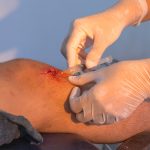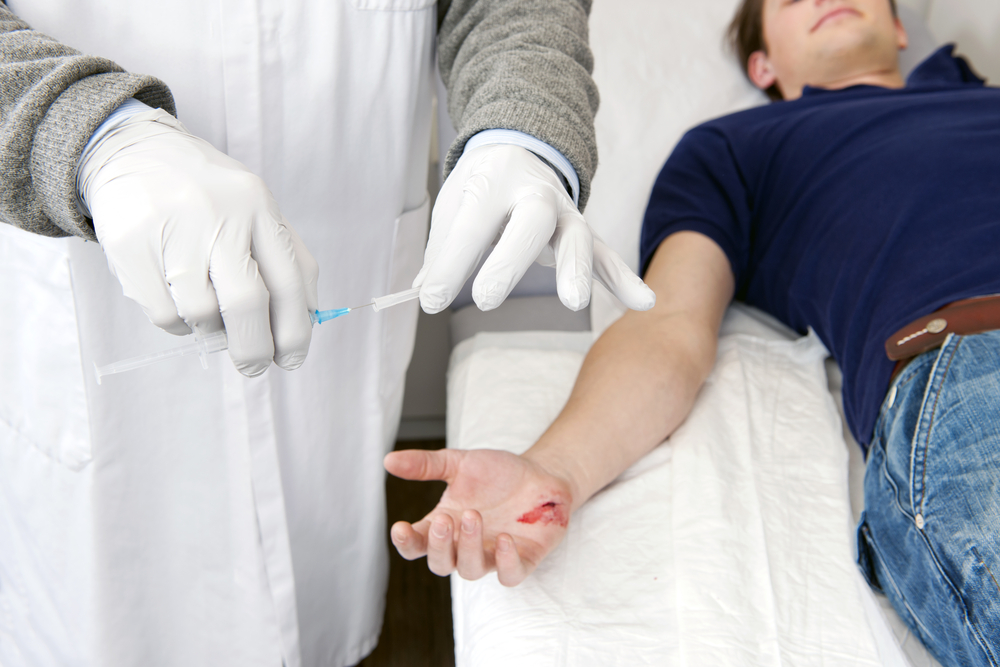
How Poor Expert Witness Evidence Can Impact A Medical Negligence Case
15th October 2024
Complications of local anaesthetics in the Emergency Department
30th November 2024It is no question that local anaesthetics can be invaluable in emergency medicine. After all, they provide quick pain relief for a range of procedures. However, they must always be used with caution, which requires emergency medics to have knowledge of the types of local anaesthetics available, as well as their potential risks, and techniques for administering them.
How do local anaesthetics work?
Essentially, local anaesthetics work by blocking nerve conduction, and they can be applied in a number of different ways, from being applied topically, to allowing for complex nerve blocking for major injuries.
What types of local anaesthetics are used?
There are a number of local anaesthetics that are in common use in the emergency department. These include:
Lidocaine hydrochloride – Perhaps one of the most versatile anaesthetics and commonly used in the Emergency Department, it absorbs effectively through the skin and is a popular surface anaesthesia. It can also be used in combination with adrenaline in dental procedures although this should be the only time adrenaline is used in conjunction with lidocaine in the specially prepared dental syringe inserts.
Bupivacaine hydrochloride – This is a long lasting anaesthetic This allows longer procedures to be undertaken in the Emergency Department but it has a slower onset than Lidocaine and it more commonly used in nerve blocks including digital blocks
Prilocaine hydrochloride – A low toxicity anaesthetic. This has beneficial properties compared to Bupivacaine and has become the choice of anaesthetic when using Biers blocks
Tetracaine An anaesthetic that must be applied topically. This can be used to numb the skin before venipuncture and it is used in the Emergency Department particularly when blood tests or cannulation are required in children
As mentioned previously adrenaline can be combined with local anaesthetics. This helps to constrict the blood vessels, which extends the anaesthetic effect and slows absorption. It can cause constriction of blood vessels and when they are end arteries, such as in digits is contraindicated. They say that if you give people a choice someone is bound to make the wrong one so most Emergency Department do not have any of their normal local anaesthetics with adrenaline in stock.
Administration and safety
The correct dose of anaesthetic varies depending on the patient themselves, how long the effects need to be sustained for, and the injection site.
It is important to note that accidental intravascular injection of a local anaesthetic can be very dangerous. This means taking your time when administering such treatments. If pain relief is required, it is best to choose a long acting local to help minimise toxicity risks.
Techniques used to administer local anaesthetic can include:
- Infiltration – This is where the local anaesthetic is injected directly into the tissues around the area. This technique can be predominantly used for minor procedures, which may include lacerations.
- Ring block for digits – This is where a local anaesthetic is injected into the base of a digit in a ring. Effectively, it can numb the entire digit, which can be useful when repairing fingertip lacerations or removing nails.
- Nerve blocks- This type of anaesthetic targets specific nerves and anaesthetises a larger area. Wrist blocks, for example, can be used for hand procedures and femoral nerve blocks can be used for pain management, as well as leg surgery.
- Biers block- This involves injecting anaesthetic into an extremity vein once the blood has been drained from it using a tourniquet. Typically, this is used on short limb surgery procedures.
While local anaesthetics are essential tools for pain management, it is vital that medics understand their properties, complications and dosing instructions. That way, they can adhere to safety guidelines and achieve optimal patient outcomes.




